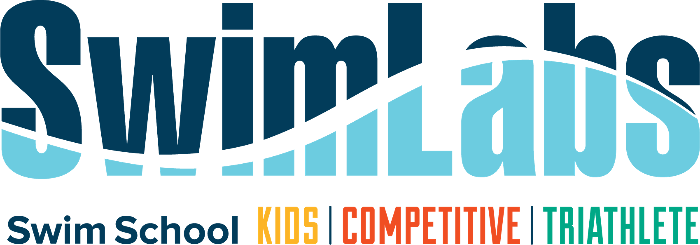Soft DQ Periods:
5-6 first 4 meets
7-8 first 2 meets
Explanation of Common Disqualifications:
FREESTYLE:
This is the hardest stroke to be disqualified in, because there are limited stroke rules.
Here are some examples of how you can be disqualified, which are also true for every stroke:
1. Failing to touch the wall on the turn in a multi-lap race.
2. Pulling on the lane line to gain advantage.
3. Pushing off the bottom to continue swimming. (Standing on the bottom is legal, but pushing off isn’t.) Freestyle is the only stroke when a swimmer is permitted to touch the bottom.
4. Two false starts: Swimmers may not move from his/her starting position before the starting horn sounds. If a swimmer has two false starts he/she will be disqualified.
BACKSTROKE:
Similar to rules for freestyle, except swimmers have to stay on their backs (with the exception of turns in multi-lap races.) Younger swimmers who are DQ’d in backstroke is typically a focus issue, while older swimmers who are learning the turn have a highly technical undertaking, and it can take some time to master.
1. Turning shoulders past vertical towards the stomach before completing a one lap race, or on the finish of a multi-lap race, is cause for disqualification. (This is defined as turning past the vertical-if you are flat on your back, you can’t roll more than 90 degrees, or you are more on your stomach than on your back.)
2. The Turn: This is tricky, but the rule is that swimmers may roll to their stomachs, take one arm stroke and, IN ONE CONTINUOUS MOTION, do a freestyle flip turn and then push off the wall on their back. The “one continuous motion” part of the rule is fairly subjective. A guideline: If a swimmer rolls over, takes their one allotted arm stroke and then has to kick into the wall before they turn, they will probably be DQ’d.
BUTTERFLY:
Butterfly is a more challenging stroke, especially for younger swimmers who lack the upper body strength to propel themselves through the water with force. These infractions are typically cause by late or long breath timing, sinking body position (caused by head being up) or some combination.
1. Both hands must touch simultaneously, at the turn and finish, although they do NOT have to be on the same level. (I.e. one hand could be under the water the other could be above.)
2. The feet have to kick together. They can be separated, but they have to stay that way. If the feet start crossing, it’s no longer a dolphin kick, it is a flutter kick—and it is a DQ.
3. Arms must be recovered OVER the water. If you pull down and then recover your arms for the next stroke under the water you’re essentially swimming breaststroke, not butterfly. Arms must be recovered simultaneously OVER the water. (Typically the position of the elbows determine if the arms are above or below the water. If the arms are moved forward with elbows under water a DQ will typically be given.)
BREASTSTROKE:
This is the most challenging stroke to swim legally, and literally has pages more of text in the official rulebook. Many of the infractions are caused indirectly by late or long breath timing, sinking body position (caused by head being up) or some combination. In addition, the breastroke kick is vastly different from the other strokes, and can be counter-intuitive for some kids who are learning to find the power and propulsion in the water. Ask the coaches for help if you notice an asymmetrical kick persisting, as there are a few dryland exercises which can help.
1. Both feet must be turned OUT during the propulsive part of the kick. Some swimmers tend to turn out one foot, but not the other. This ends up being a scissors kick. If both feet are turned in this is considered a butterfly kick. Both the scissors and dolphin kicks are illegal.
2. Both hands must touch the wall simultaneously, at the finish and at the turn, although, like butterfly, they do NOT have to be on the same level.
3. Cannot take more than one stroke and kick underwater. Only one pull-down stroke and one kick are allowed at the start and after a turn. The head must break the calm surface level of the water BEFORE the hands turn inward at the widest part of the second arm pull. Multiple underwater strokes will result in a DQ, because the swimmer’s head must be above the surface of the water at some point during each stroke cycle. (In other words, swimmers can’t go underwater for two or more strokes at a time, during the start, turn, or during the race).
4. Hands may NOT pull beyond the HIP line except once on the start and once after a turn.
5. Incorrect stroke cycle, the stroke cycle must be one arm pull followed by one leg kick. You cannot pull twice then kick or vice versa. At the start or after a turn the swimmer must start with an arm pull then a leg kick. This cycle must be continued throughout the race. I.E. no double pulls or double kicks. Breaststroke is the only stroke where a stroke cycle is specified.
6. Dolphin kick at start or turn BEFORE arm pull has started. A swimmer is permitted to take ONE dolphin kick DURING or at the end of the first pull down stoke at the start or after a turn. “During” occurs once the hands have moved outward from the streamline. If the dolphin kick is taken before the hands move a DQ results.
INDIVIDUAL MEDLEY:
1. All the individual stroke rules apply during that segment of the race.
2. On turns, swimmers must finish the stroke they are swimming before they transition to the next stroke. In other words, the butterfly to backstroke turn must incorporate a butterfly FINISH, and then a transition to backstroke that puts the swimmer on his back for that leg of the race. The sometimes-tricky one is backstroke to breaststroke. Swimmers must complete the backstroke leg on their backs and then transition to the breaststroke. It is legal to do a flip turn if the hand touch is done on the back during the backstroke finish.
3. On the freestyle leg of the IM (or Medley Relay), a stroke OTHER than back, breast or fly MUST be swum.
RELAYS:
1. The same rules apply in relays as for the individual strokes as previously described.
2. False Start - Relay starts require the swimmer on the blocks to have some part of his/her body still TOUCHING THE BLOCKS when the swimmer in the water touches the wall.
3.) Physical assist from another person – at the start of a relay leg the swimmer on the block may NOT be physically assisted by anyone (coach, parent, other swimmer) else. Yelling is fine touching is not.
Documents:
DQ Guidelines





